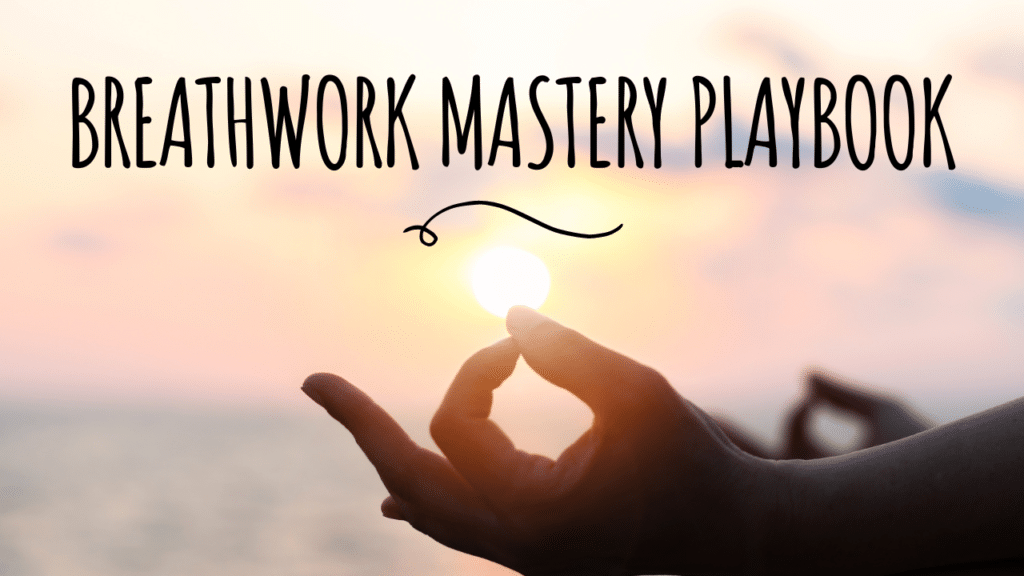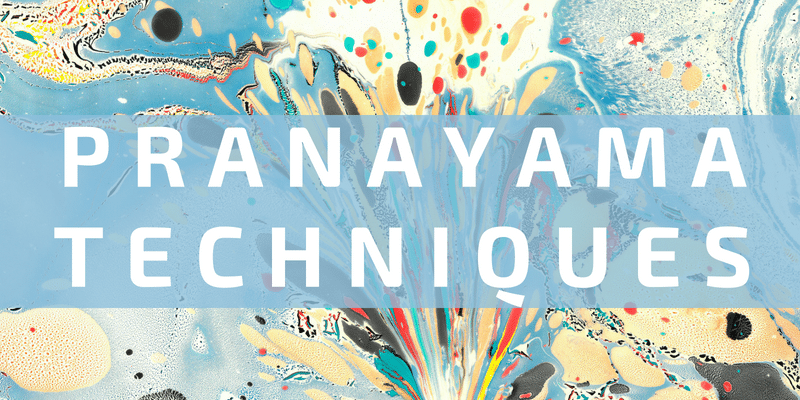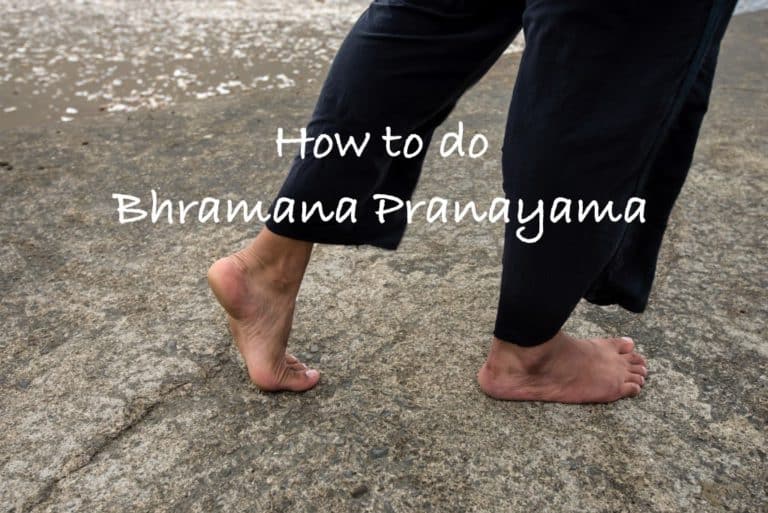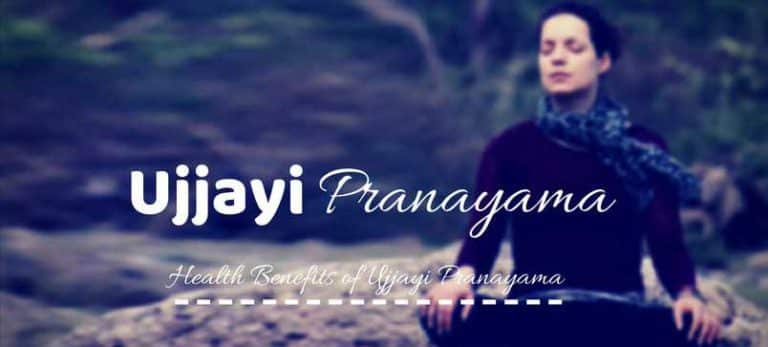17 Different Types of Pranayama Breathing Techniques & How To Do Them
- 17 Different Types of Pranayama Breathing Techniques & How To Do Them
- What Is Pranayama? Definition and Meaning
- How To Do Pranayama Breathing: Techniques and Exercises
- Ujjayi Pranayam – Victorious Breath
- Kapalabhati – Skull Shining Breath
- Nadi Shodana – Alternate Nostril Breathing
- Simha Kriya – Lion’s Breath
- Murcha Pranayama – Fainting Breath
- Anuloma Viloma – Nostril Breathing
- Bhastrika Pranayama – Bellows Breath
- Surya Bhedana Pranayama – Sun Piercing Breath
- Chandra Bhedana – Moon Piercing Breath
- Bhramari Pranayama – Bee Breath
- Sheetali Pranayama – Cooling Breath
- Sitkari Pranayama – Hissing Breath
- Sama Vritti Pranayama – Equal Breathing
- Dirgha Pranayama – 3 Part Breath
- Udgetth Pranayama – Chanting Breath
- Kumbhaka Pranayama – Breath Retention
- Plavini Pranayama – Floating Breath
- Next Steps and Where To Go From Here
What Is Pranayama? Definition and Meaning
Pranayama is a yogic term that means to develop control of the breath. Prana refers to the vital energy in the body, which is represented by the flow of the breath throughout the entire body, and ayama translates to the ability to control or direct.
While control of the breath is the most literal definition of pranayama, there is a more subtle meaning to the phrase as well. As implied by the idea of prana as vital energy, or life-force, pranayama techniques can also be considered tools for developing mental and physical control that extent to other areas of your life.
There are many different types of pranayama techniques to choose from, and in the below list you’re sure to find one that is right for you.
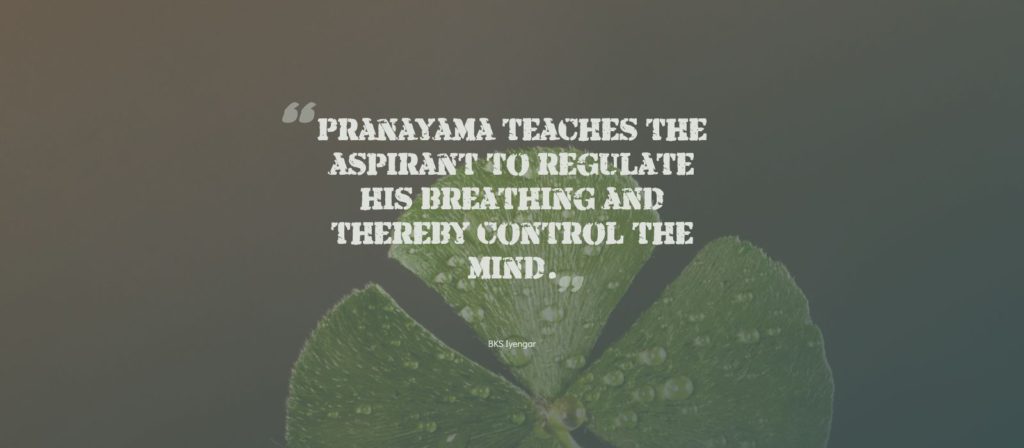
I’ve broken this post down into two categories of techniques. The first discusses different types of pranayama, and deals with fundamental differences in how you can engage with your breath. The second then outlines specific pranayama techniques and exercises you can do to develop control of the breath, and gain mastery of the flow of energy through your body.
Click Here to See Our Complete List of Breath Exercises.
How To Do Pranayama Breathing: Techniques and Exercises
There are many different types of breathing you can use to direct the flow of air into and out of your body. These are the general categories of breath and may encompass many different types of exercises for each.
- Natural Breathing
- Abdominal Breathing
- Thoracic Breathing
- Clavicular Breathing
- Yogic Breathing
- Breathing with Ratios
- Fast Breathing
The following are specific exercises and breath techniques you can use in order to begin to breath more consciously and use your breath to experience higher levels of bliss. They represent the primary types of breath exercises used in traditional yogic practices.
Ujjayi Pranayam – Victorious Breath
If you’ve ever taken a yoga class, you may already be familiar with Ujjayi Pranayam. This is one of the easiest and most basic breath techniques you can work with and is a great starting point for beginners.
Ujjayi breathing, often referred to as “victorious breath” or “ocean breath,” is a foundational technique in the practice of yoga and mindfulness. This controlled and rhythmic breath involves gently constricting the back of the throat, creating a subtle whispering sound reminiscent of ocean waves. The key to mastering Ujjayi lies in the balance between inhaling and exhaling, allowing the breath to become both powerful and soothing.
As practitioners engage in Ujjayi breathing, they not only cultivate a heightened awareness of the breath but also benefit from increased oxygenation of the blood, promoting a sense of calm and focus. The audible quality of Ujjayi serves as a guide, helping individuals synchronize movement with breath during yoga sequences. In addition, there are many health benefits associated with this breath,
Ujjayi breathing is known to quiet the mind, reduce stress, and enhance mental clarity. Incorporating this mindful breath into daily practice fosters a deeper connection between body and mind, fostering overall well-being and inner strength.
You can learn more about how to do Ujjayi breath here.
Kapalabhati – Skull Shining Breath
Kapalabhati pranayama, translated as “skull shining breath,” is a dynamic and invigorating yogic breathing technique that offers a myriad of physical and mental benefits. In this practice, rapid and forceful exhalations are complemented by passive inhalations, creating a powerful abdominal pump. The continuous contraction and release of the abdominal muscles not only massage the internal organs but also stimulate digestion and detoxification.
Kapalabhati is renowned for its ability to increase lung capacity, enhance respiratory function, and boost oxygenation throughout the body. Beyond the physical benefits, the rhythmic nature of this pranayama cultivates mental clarity, energizes the mind, and alleviates stress.
Regular practice of Kapalabhati is believed to purify the mind and body, promoting a sense of vitality and rejuvenation. Integrating this transformative breathwork into one’s routine offers a pathway to improved overall well-being, making it a valuable addition to any holistic health regimen.
Read more about how to do Kapalabhati breath.
Nadi Shodana – Alternate Nostril Breathing
Alternate Nostril Breathing, or Nadi Shodhana, is a centuries-old yogic breathing technique renowned for its ability to balance the mind, calm the nervous system, and enhance overall well-being. This method involves the deliberate, rhythmic inhalation and exhalation through alternate nostrils, achieved by using the thumb and fingers to manipulate the flow.
It is another great beginner breath exercise to work with, as the core technique is very simple to achieve.
By promoting balance between the left and right hemispheres of the brain, Nadi Shodhana helps alleviate stress, improve focus, and induce a profound sense of calm. This mindful breathwork is believed to harmonize the body’s energy channels, fostering a sense of equilibrium. Beyond its mental and emotional benefits, alternate nostril breathing has been associated with improved respiratory function and heightened lung capacity.
Integrating Nadi Shodhana into a daily routine provides a practical tool for stress management and mindfulness, offering a tranquil pause in the midst of life’s demands. As a gateway to a more balanced and centered existence, this ancient practice continues to be a valuable asset in the realm of holistic well-being.
Learn how to do alternate nostril breathing.
Simha Kriya – Lion’s Breath
Simha Kriya Pranayama, often referred to as the Lion’s Breath, is a powerful yogic technique that combines breathwork with specific facial expressions to release tension and invigorate the body and mind. In this practice, practitioners sit in a comfortable position, open their mouths wide, and extend their tongues as far as possible while exhaling forcefully. This distinctive roaring breath not only promotes respiratory health by clearing the lungs but also stimulates the throat and facial muscles.
Simha Kriya is renowned for its ability to alleviate stress, anxiety, and pent-up emotions. The intentional release of breath and the dynamic facial expressions are believed to dispel negative energy and create a sense of inner freedom. Incorporating Simha Kriya into a routine serves as a cathartic practice, fostering a connection between breath, body, and emotions. This unique pranayama provides a transformative experience, promoting mental clarity and a revitalized sense of energy.
This is a powerful warming pranayama technique that boosts your immune system, expands lung capacity, and works as a checkpoint to see how your respiratory system is doing if suddenly you are not able to perform this practice. It is accessible to everyone including pregnant and menstruating women.
Learn how to practice Simha Kriya
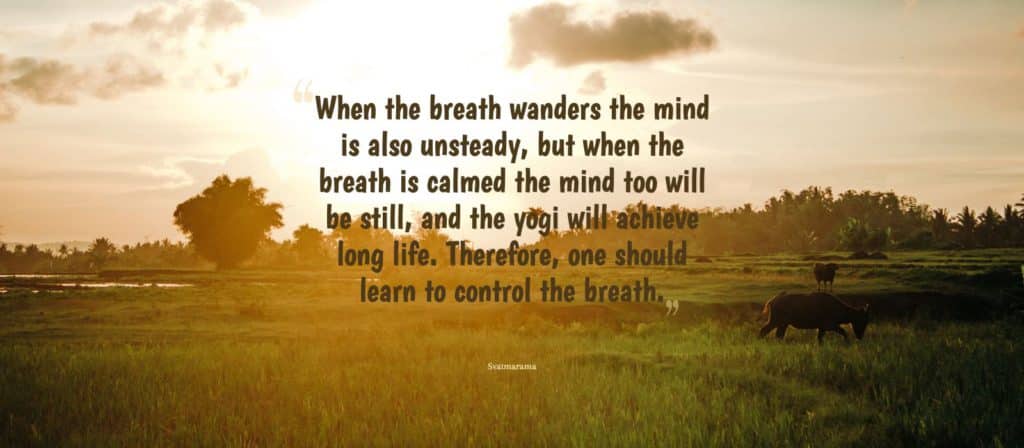
Murcha Pranayama – Fainting Breath
Murcha Pranayama, also known as the Fainting Breath, is an advanced yogic breathing technique that involves controlled breath retention to induce a state of deep relaxation and heightened consciousness.
In this practice, the breath is gradually slowed down and then suspended, creating a sensation akin to fainting. It demands a high level of breath control and mindfulness.
Murcha Pranayama is traditionally employed as a preparatory step for meditation, allowing practitioners to transcend ordinary consciousness and access deeper states of awareness. The deliberate slowing of the breath stimulates the parasympathetic nervous system, promoting profound relaxation and mental stillness.
When practicing this breath, know that it requires a solid foundation in breath control and overall physical well-being. When practiced with mindfulness, Murcha Pranayama can be a transformative tool for those seeking to explore the inner dimensions of consciousness.
Learn more about how to do murcha pranayama in this post.
Anuloma Viloma – Nostril Breathing
Anuloma Viloma is another type of alternate nostril breathing, similar to the practice of Nadi Shodana described above.
However, during anuloma viloma, it is common to inhald through both nostrils, and alternate the exhalation through the left and right nostrils, exhaling through only one nostril at a time. This helps to create a smooth and uninterrupted flow of breath.
Anuloma Viloma is celebrated for its ability to reduce stress, enhance respiratory function, and create mental clarity. The controlled breathing patterns encourage a state of relaxation, activating the parasympathetic nervous system.
Regular practice of Anuloma Viloma is believed to improve lung capacity, balance the left and right hemispheres of the brain, and foster overall well-being. Integrating this pranayama into daily life offers a practical tool for managing stress, promoting mindfulness, and cultivating a sense of inner peace.
Learn more about how to do anuloma viloma in this post.
Bhastrika Pranayama – Bellows Breath
Bhastrika Pranayama, often referred to as Bellows Breath, is a dynamic yogic breathing exercise that involves forceful inhalation and exhalation.
In this practice, the breath is drawn in and expelled rapidly, resembling the bellows of a blacksmith’s forge. Bhastrika aims to increase oxygen intake, energize the body, and stimulate the nervous system.
Practitioners engage the abdominal muscles during Bhastrika, creating a rhythmic and vigorous breath that enhances circulation and warms the body. This pranayama is celebrated for its ability to invigorate the mind, increase vitality, and clear the respiratory system. The forceful nature of Bhastrika also aids in removing toxins from the body, promoting a sense of rejuvenation.
Learn more about how to do bhastrika pranayama.
Surya Bhedana Pranayama – Sun Piercing Breath
Surya Bhedana Pranayama, also known as Right Nostril Breathing, is a yogic breathing technique that involves the conscious manipulation of the breath through the right nostril. The practice is believed to stimulate the sympathetic nervous system, associated with energy activation and increased alertness.
In Surya Bhedana, the breath is inhaled and exhaled through the right nostril, while the left nostril remains closed. This pranayama is thought to generate heat in the body and increase vitality. It is often practiced in the morning or during times when a boost of energy and focus is desired.
The technique is considered balancing for the dual energies (ida and pingala) associated with the left and right nostrils in yogic philosophy. As with any pranayama practice, it’s advisable to learn under the guidance of an experienced instructor to ensure proper technique and to address any individual health considerations.
Learn more about how to do Surya Bhedhana Pranayama in this post.
Chandra Bhedana – Moon Piercing Breath
Chandra Bhedana Pranayama, also known as Moon Piercing or Left Nostril Breathing, is a yogic breathing practice that emphasizes the flow of breath through the left nostril. This technique is associated with the lunar or cooling energy in the body, linked to the parasympathetic nervous system, promoting a sense of calm and relaxation.
During Chandra Bhedana, practitioners inhale and exhale through the left nostril while keeping the right nostril closed. This deliberate manipulation of breath is believed to have a soothing effect on the mind, reducing stress and promoting mental tranquility. It is often practiced in the evening or before bedtime to encourage a state of relaxation and prepare the body for restful sleep.
Learn more about how to do chandra bhedana in this post.
Bhramari Pranayama – Bee Breath
Bhramari Pranayama, often referred to as the Humming Bee Breath, is a calming and meditative yogic breathing exercise.
In this practice, practitioners produce a soft humming sound during both inhalation and exhalation, resembling the gentle buzz of a bee. This technique involves closing the eyes, blocking the ears with the thumbs, and placing the index fingers on the forehead, creating a cocoon of sensory withdrawal.
Bhramari Pranayama is celebrated for its ability to reduce stress, anxiety, and calm the mind. The vibrations created during the humming sound are believed to resonate throughout the body, promoting a sense of internal harmony.
This pranayama is often practiced to quiet the mind, alleviate tension, and enhance overall well-being. Incorporating Bhramari into a routine provides a valuable tool for cultivating inner peace and mindfulness in the midst of life’s demands.
Learn how to do Bhramari – Bee Buzzing Breath in this post.
Sheetali Pranayama – Cooling Breath
Sheetali (Sitali) Pranayama, or Cooling Breath, is a yoga breathing technique designed to reduce body heat and create a sense of calm. In this practice, individuals inhale air through a rolled tongue or pursed lips, experiencing a cooling sensation as the breath passes over the tongue.
Sheetali is particularly beneficial in hot climates or during times of heightened stress. The inhalation of cool air is thought to soothe the nervous system, alleviate tension, and enhance overall well-being. This pranayama is also believed to regulate blood pressure and improve digestion.
The rhythmic nature of Sheetali Pranayama promotes mindfulness and concentration, making it a valuable addition to stress management practices. It is important to note that some individuals may find it challenging to roll their tongues, and in such cases, Sheetkari Pranayama, a variation where the breath is drawn in through clenched teeth, can be practiced for similar cooling effects. As with any pranayama, it’s recommended to learn under the guidance of an experienced instructor.
Sitkari Pranayama – Hissing Breath
Sitkari (Sheetkari) Pranayama, or Hissing Breath, is a calming yogic breathing exercise that involves inhaling through the clenched teeth, creating a gentle hissing sound.
This practice is particularly beneficial for cooling the body and calming the mind. In Sitkari, individuals breathe in slowly and steadily through the mouth with the upper and lower teeth lightly touching, focusing on the sound and sensation of the breath.
This pranayama is renowned for its ability to reduce stress, alleviate anxiety, and promote a sense of tranquility. The cooling effect of Sitkari is believed to balance the body’s temperature, making it especially useful during periods of high heat or emotional intensity.
The practice enhances mindfulness and concentration, serving as a valuable tool for those seeking to cultivate a sense of inner peace amidst life’s challenges.
Sama Vritti Pranayama – Equal Breathing
Sama Vritti Pranayama, or Equal Breathing, is a foundational yogic breathwork practice characterized by maintaining an equal duration for both inhalation and exhalation. In this rhythmic technique, each breath becomes a harmonious dance, promoting balance and focus. Sama Vritti serves as a gateway to mindfulness, grounding practitioners in the present moment through the simplicity of balanced breath.
As inhalation and exhalation mirror each other, a profound sense of equilibrium unfolds, not only within the breath but also in the body and mind. This pranayama technique is a valuable tool for cultivating awareness, fostering a tranquil sanctuary amidst life’s fluctuations, and enhancing mental clarity. Through its accessible and calming nature, Sama Vritti becomes a cornerstone for those seeking a balanced and centered state of being in their yogic journey.
Dirgha Pranayama – 3 Part Breath
Dirgha Pranayama, also known as Three-Part Breath, is a transformative yogic practice that guides the breath through three distinct regions of the body. With intentional inhalation, the breath begins by filling the abdomen, then expands into the ribcage, and finally gently rises into the chest.
This systematic breathwork not only promotes relaxation but also enhances lung capacity, fostering a profound connection between breath and body. Dirgha serves as a holistic breath experience, encouraging practitioners to explore the depth and expansiveness of each inhalation and exhalation.
As the breath moves through these three parts, it becomes a mindful journey, offering a sanctuary of tranquility within the rhythmic dance of the breath. Dirgha Pranayama provides a space for self-discovery, cultivating a sense of inner harmony and fostering a deeper connection to the present moment in the ever-flowing tapestry of life.
Udgetth Pranayama – Chanting Breath
Udgeeth Pranayama is a sacred journey of breath interwoven with the universal sound of “Om.” In this profound yogic practice, practitioners chant the sacred syllable “Om” intentionally during exhalation, transforming the breath into a meditative and spiritual experience.
The resonance of “Om” creates a harmonious atmosphere, fostering a profound sense of unity and peace within. Udgeeth transcends conventional breathwork, serving as a powerful doorway to inner serenity and oneness.
This practice invites individuals to connect with the deeper rhythms of existence, harmonizing breath, sound, and spirit. Udgeeth Pranayama becomes not just a technique but a sacred exploration, guiding practitioners towards a tranquil sanctuary within, where the timeless vibration of “Om” echoes through the inner landscapes, offering a profound connection to the divine essence that permeates the cosmos.
Kumbhaka Pranayama – Breath Retention
Kumbhaka Pranayama, the practice of breath retention, unveils a profound stillness within the rhythmic dance of inhalation and exhalation. This yogic technique involves intentionally holding the breath, a practice that extends beyond enhancing lung capacity to refine mental clarity and create a serene inner space.
As breath is suspended, the body absorbs oxygen deeply, energizing the cells and fostering a meditative calm within the mind. Kumbhaka becomes a bridge between the external and internal realms, inviting practitioners to explore the quiet expanses within.
Through intentional breath pauses, individuals navigate the serene landscapes of their inner being, finding moments of peace and tranquility amidst life’s continuous flow. Kumbhaka Pranayama serves as a transformative practice, unveiling the subtle realms of introspection and inviting a journey into the serene sanctuary of one’s own breath.
Plavini Pranayama – Floating Breath
Plavini Pranayama, the Floating Breath, is a unique and lesser-known yogic practice that involves the conscious swallowing of air to expand the stomach. This distinctive breathwork is believed to increase energy and vitality, creating a sensation of lightness and buoyancy within the practitioner.
As the breath expands the abdomen with a floating quality, Plavini transcends conventional boundaries, becoming a meditative act that draws attention inward. This pranayama unfolds like a gentle breeze, offering practitioners a pathway to a buoyant and uplifted state, not just in the body but also in the spirit.
Through the floating breath, individuals may discover a lightness that transcends the physical, experiencing a serene expansion and tranquility that emanates from within. Plavini Pranayama becomes a unique exploration, inviting practitioners to navigate the ethereal landscapes of breath and discover the subtle interplay between breath, body, and a tranquil inner state.
Next Steps and Where To Go From Here
If you want to learn more about how to use these pranayama exercises, we teach many of the strategies in our Breathwork Mastery Playbook
This playbook provides a comprehensive set of tools to help you gain control of your breath, so you can tune-in to.a natural, effortless sense of joy, peace, and well-being, anytime you choose.
This playbook is available to all members of The Joy Within.
